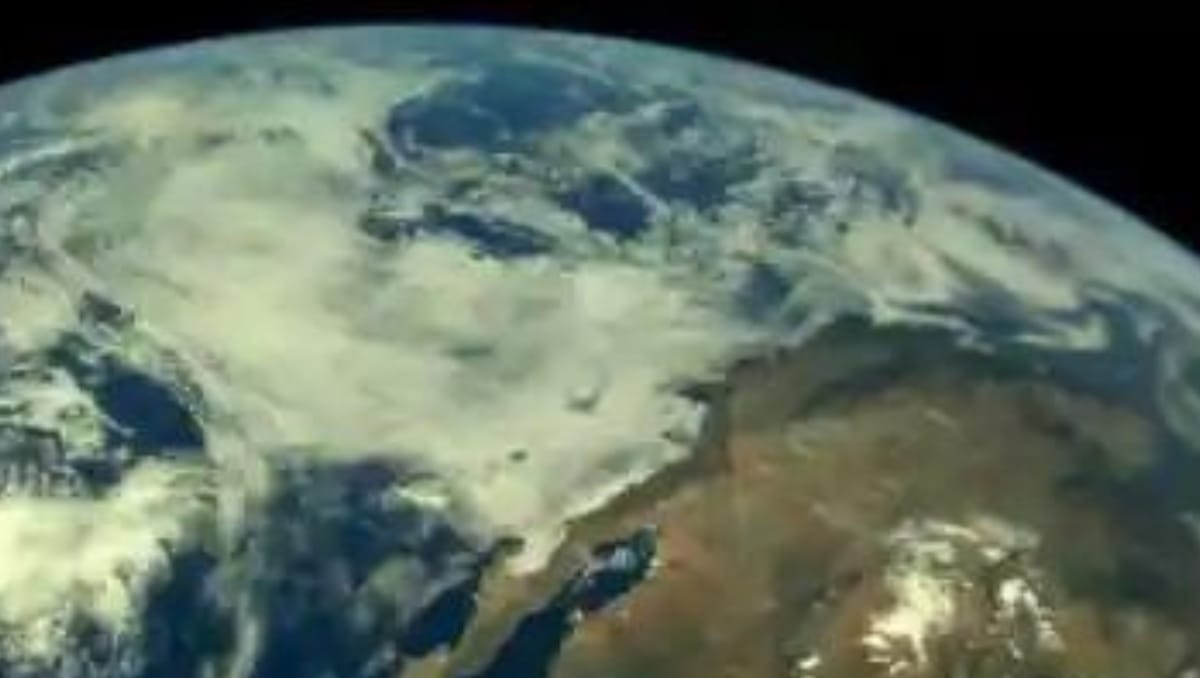Sydeny, All frameworks are “go” for tonight’s dispatch of China’s another step in a carefully
arranged lunar investigation program. Put on best of a capable Long Walk 5 rocket, the
Chang’e 6 mission is due to lift off from the Wenchang Space Dispatch Location on southern
Hainan Island at 7:30pm AEST.
aims to convey a few “firsts” in the progressively swarmed and competitive field of Moon
exploration.
Chang’e 6 will be as it were the moment mission to arrive on the lunar distant side, after
Chang’e 4 effectively touched down to begin with in 2019.
It’s the most recent mission in China’s fruitful and long-running lunar investigation program,
pointed at demonstrating modern innovative propels with each mission. And this time, it’s
moreover an motivating deed of universal collaboration.
What’s on the distant side of the Moon?
The shuttle was initially built as a reinforcement for the past mission– Chang’e 5– which
effectively brought back 1.73 kilograms of lunar regolith from the Moon’s close side in 2020.
However, the Chang’e 6 mission parameters are more driven and experimentally more
exceedingly expected. It is too a complicated mission. Its four isolated shuttle must work in
near coordination to effectively return up to 2kg of regolith from the Moon’s distant side.
From our vantage point on Soil, the Moon’s distant side is never obvious.
The Earth-Moon framework is tidally bolted: indeed, in spite of the fact that both pivots, we continuously confront the same half of the Moon.
When the Soviet Union’s Luna 3 test returned the to begin with pictures of the Moon’s distant
side in 1959, they appeared a intensely cratered surface. It’s very diverse from that of the
commonplace close side.
Image Source: CBS NEWS
This pitted appearance, combined with tests returned by NASA’s Apollo missions, advertised
a few bolsters for the prevalent “Late Overwhelming Bombardment” hypothesis. In spite of the
fact that this hypothesis is not generally acknowledged, its defenders recommend that
expansive numbers of shooting stars and space rocks may have affected the Sun oriented
System’s rough planets at an early arrange of their formation.
Chang’e 6 points to collect tests from the most seasoned lunar affect cavity, the South
Pole-Aitken bowl. Numerous later missions to the Moon have focused on the lunar south
polar locale. This was, in portion, driven by the revelation of water ice in the area’s dull holes
and its potential misuse for future lunar bases.
With this inescapable test return, we are presently getting tantalizingly near to learning what
the lunar distant side is made of and its age. It would give more detail than ever some time
recently. This might offer assistance us truly get it the early history of the Sun powered
Framework and whether the Late Overwhelming Assault hypothesis needs a rethink
Science without borders
Any examples recovered will be shared with the universal community for in-depth
investigation, fair like the Chang’e 5 tests and information from China’s other space science
missions– counting its later high-resolution Moon atlas.
In the current time of expanded geopolitical pressures, the Chang’e 6 mission is a
uncommon illustration of helpful worldwide collaboration. The test carries disobedient
contributed by France, Italy, Pakistan and Sweden. The Swedish payload was created with
financing from the European Space Office .
This may appear astounding given the current state of world issues. But ESA and the
Chinese Institute of Sciences share a history of joint space missions, in spite of the fact that
relations have wilted to some degree in later years.
refreshing development
From a logical viewpoint, Chang’e 6’s universal engagement is a reviving improvement.
Researchers are driven by all inclusive standards supporting the logical approach. We put
extraordinary esteem on collaborative endeavors, independent of one’s national root.
Science doesn’t know borders.
With space missions being fair one illustration, Chinese researchers are quickly picking up
ground and progressively driving worldwide logical accomplishments. Chinese ability in
science and innovation has presently come to levels that can no longer be overlooked by
worldwide collaborators and competitors alike
Yet real-world limitations in a progressively geopolitically full environment do influence us
work as researchers, impacting what can be shared between colleagues universally, and
must be figured into our viable choice making.
It’s critical to strike a cautious adjust between ensuring national interface and the free stream
of thoughts that may eventually lead to logical breakthroughs.
Not each logical trade comes to a level that warrants activating national security or outside
impedances caution. To summarizing the Australian governments outside relations
arrangement, “collaborate where we can; work out restriction where we must”. The Change’6
mission is an amazing illustration of this kind of profitable worldwide association.

1 Comment
Pingback: U.S. Forms New Indo-Pacific Security Bloc Amid South China Sea Tensions - INPAC Times